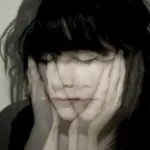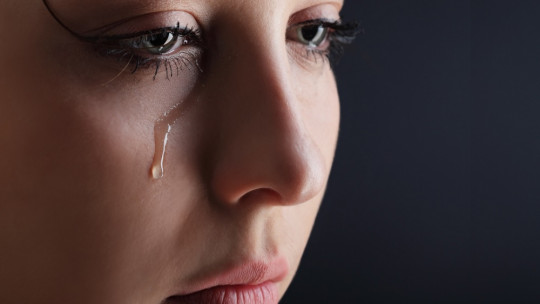Bipolar disorder and schizoaffective disorder are two diseases that can be truly disabling if not treated appropriately.
Both disorders share symptoms of depression and mania, and sometimes the diagnosis is complicated by difficulties in distinguishing between one and the other. However, there are important characteristics that differentiate them and that can help to correctly identify them.
In this article we address The main differences between schizoaffective disorder and bipolar disorder but first we explain what these two mental disorders consist of.
What is schizoaffective disorder?
Schizoaffective disorder is a chronic mental health condition primarily characterized by symptoms of schizophrenia, such as hallucinations or delusions, and symptoms of a mood disorder, such as mania and depression. Many people with this disorder are often initially misdiagnosed with bipolar disorder or schizophrenia.
Because schizoaffective disorder is less studied than the other two conditions, many interventions are borrowed from its treatment approaches. Schizoaffective disorder It is relatively rare, with a lifetime prevalence of only 0.3% Men and women experience schizoaffective disorder at the same rate, but men often develop the illness at a younger age.
The specific causes are unknown, but it has been suggested that there may be a combination of genetic and hereditary factors, stress, and structural and functional aspects at the brain level. There are two different types of this disorder : the bolar type, which includes manic episodes and, sometimes, episodes of severe depression; and the depressive type, which only includes depressive symptoms.
Symptoms of schizoaffective disorder that it shares with schizophrenia include: hallucinations, delusions, disorganized thinking, depressed mood, or manic behavior (depending on the type of disorder). It also shares symptoms of depression, such as weight loss or gain, lack of energy, feelings of guilt, sleep disorders, and suicidal thoughts; and symptoms of mania, such as agitation, inflated self-esteem, logorrhea, or increased social, sexual, or work activities.
Bipolar disorder: definition, types and symptoms
Bipolar disorder, also known as manic-depressive illness , is a brain disorder that causes unusual changes in mood, energy, activity levels, and the ability to perform everyday tasks. There are four basic types of bipolar disorder and all of them involve clear changes in mood.
These mood states range from periods of extremely euphoric and energetic behavior (known as manic episodes) to very sad or hopeless periods (known as depressive episodes). Less severe manic periods are known as hypomanic episodes.
Hypomania is a mild form of mania, and its symptoms are less intense s. Psychotic symptoms do not usually occur, nor do behavioral changes occur that require the patient to be hospitalized. The person perceives the hypomanic state as a feeling of intense well-being, with expanded self-esteem and increased creative capacity.
In hypomanic states it is not unusual for the consumption of alcohol and other psychoactive substances to increase. Furthermore, people in a hypomanic state often start relationships and projects that they later regret when the hypomanic episode ends.
Bipolar disorder can be classified into different types. Let’s see below which ones:
Bipolar disorder type I
This type is defined by manic episodes that last at least 7 days, or by manic symptoms that are so severe that the person needs immediate hospital care. In general, Depressive episodes also occur that usually last at least 2 weeks Episodes of depression with mixed characteristics (having depression and manic symptoms at the same time) are also possible.
Bipolar disorder type II
This type of bipolar disorder is characterized by a pattern of depressive episodes and hypomanic episodes, but not the full-blown manic episodes described in bipolar I disorder.
Cyclothymic disorder
Also called cyclothymia, this type of bipolar disorder is defined by the numerous periods of hypomanic symptoms and numerous periods of depressive symptoms lasting at least 2 years (1 year in children and adolescents). However, the symptoms do not meet the diagnostic requirements for a hypomanic episode and a depressive episode.
Other unspecified bipolar disorders
All those people who present symptoms of bipolar disorder but who do not match the three previous categories would fall into this category.
Differences between schizoaffective disorder and bipolar disorder
It is often difficult to distinguish between a schizoaffective disorder and a bipolar disorder, since Both diseases share symptoms (euphoria and depression) However, one of the main differences between both disorders is the presence of severe psychotic symptoms, which only occur in schizoaffective disorder.
Schizoaffective disorder would be halfway between schizophrenia and bipolar disorder type I, since its course is similar to that of the latter, although psychotic episodes can be experienced without necessarily having episodes of mania and depression. When making a diagnosis, it is usually more difficult to detect the presence of a schizoaffective disorder; However, the treatment used is similar to that used for bipolar disorder, that is, maintenance antipsychotic medications.
If we stick to psychiatric manuals and nosological classifications, bipolar disorder is a mood disorder that includes severe depression and swings from one extreme to another (from mania to depression) in a very variable way. For its part, schizoaffective disorder is defined at a psychiatric level as a psychosis with affective symptoms (manic or depressive) that are less acute and more treatable than those of schizophrenia, with which it shares some features.
Regarding the pharmacological therapeutic approach, research into the treatment of bipolar disorder has advanced modestly in recent years; and with regard to schizoaffective disorder, there have been considerable advances compared to other diseases such as schizophrenia.
Definitely, Schizoaffective disorder involves symptoms similar to those that occur in schizophrenia , with the addition of several affective symptoms, whether depressive or euphoric, or the sum of both types; that is, as the union between schizophrenia and bipolar disorder.









